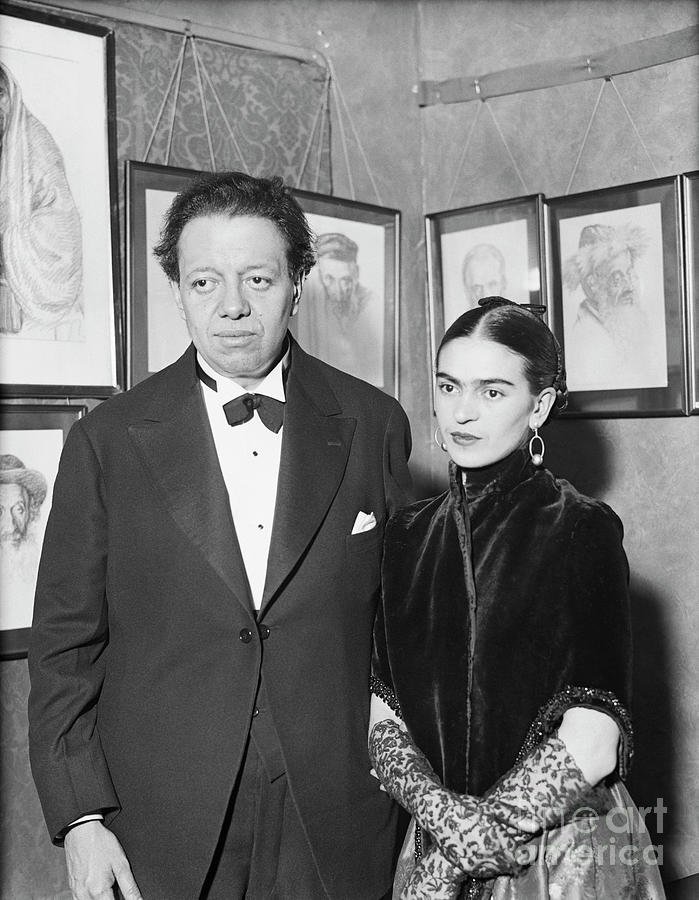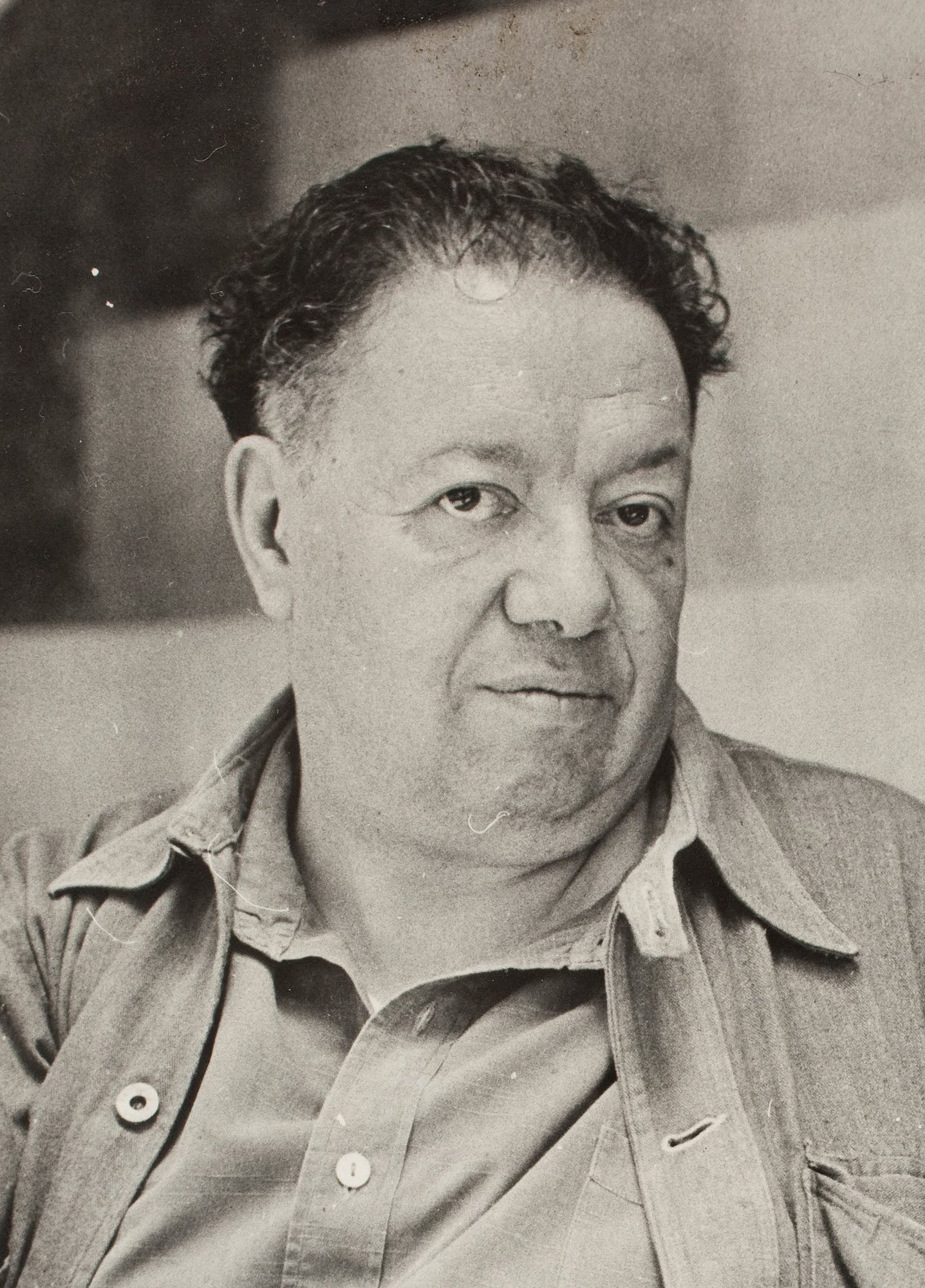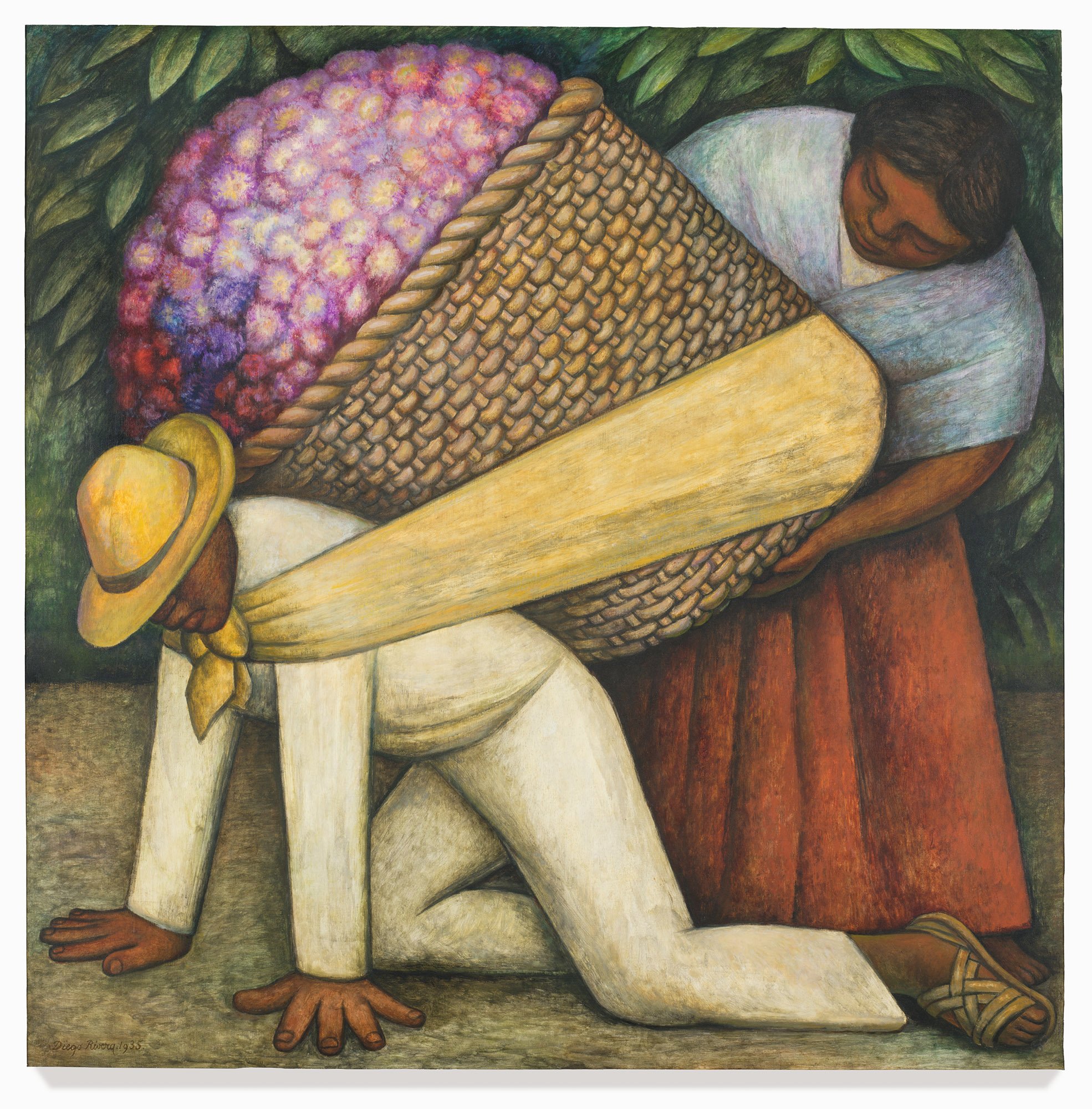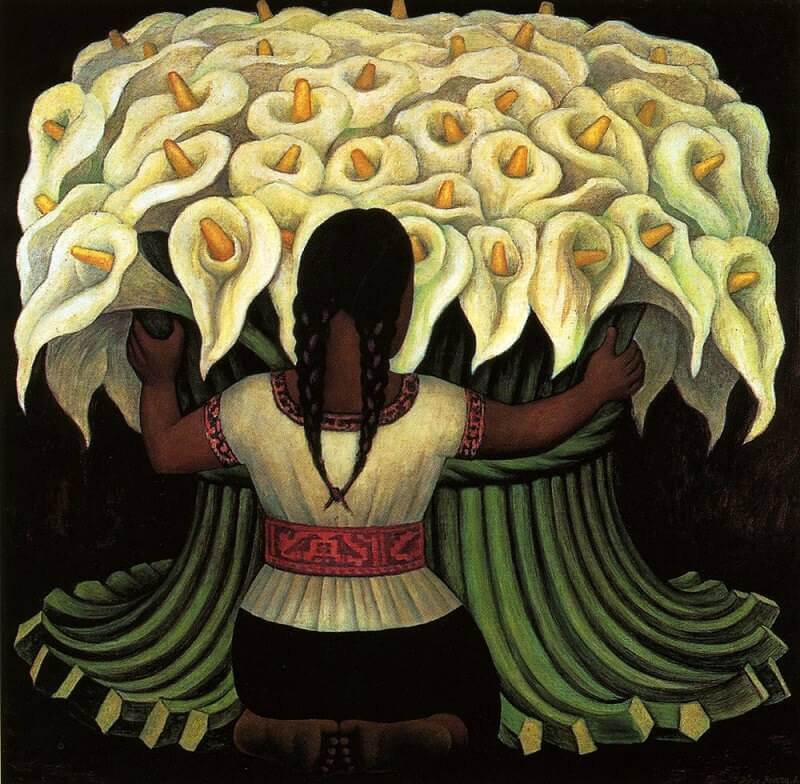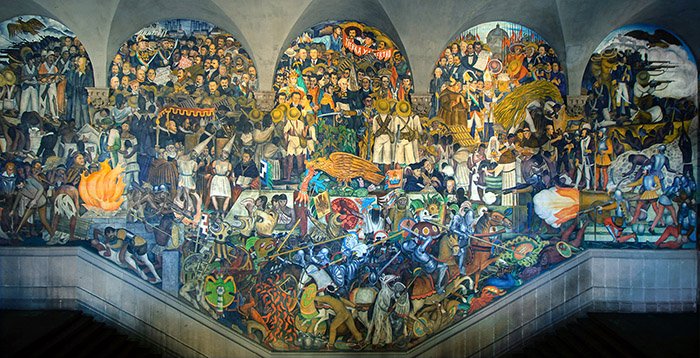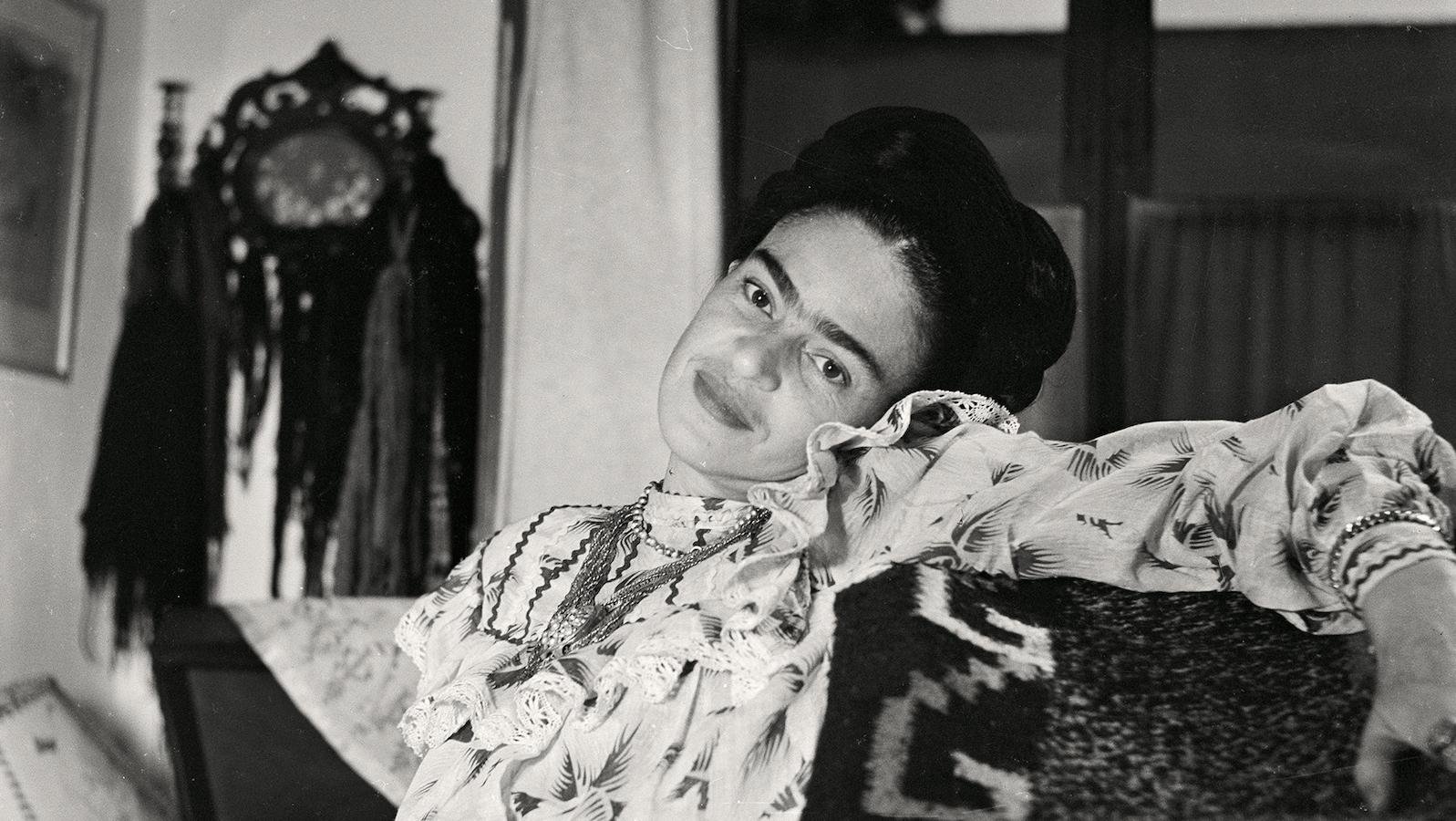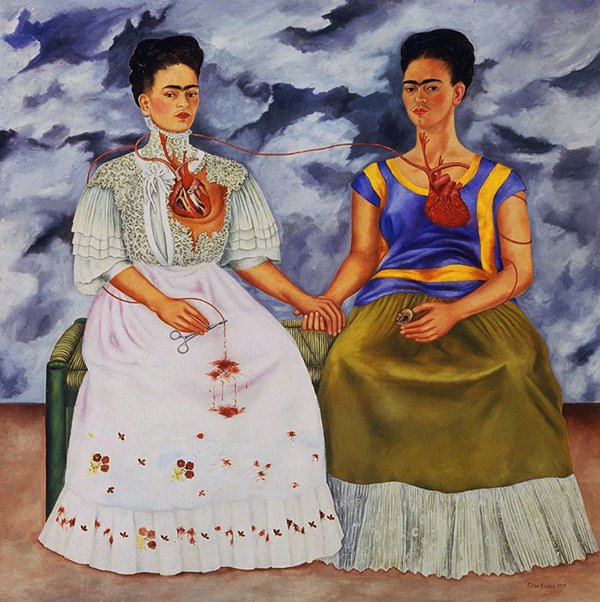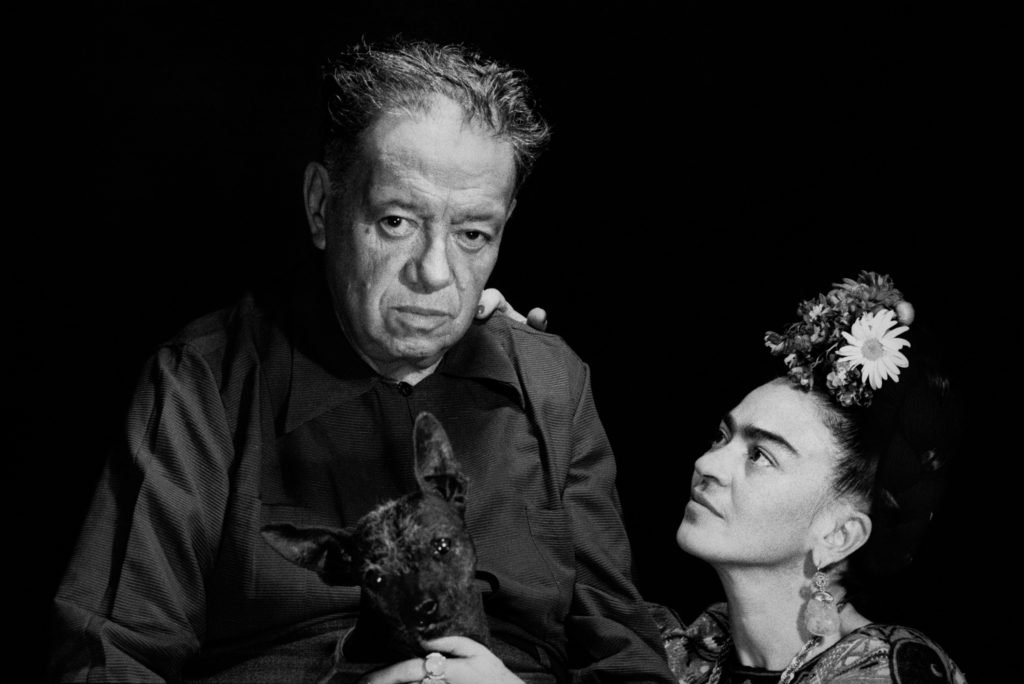Episode #117: Modern Love: Frida and Diego, Part 2
Listeners, I heard you—a bunch of self-admitting hopeless romantics who wanted to hear more about people bound by attraction, fascination. By love. Though there are examples of romantic and sexual relationships between creators that are sprinkled throughout art history as we know it, it’s true that we have the most information about relationships from folks who lived in the last century—because we have greater access to documentation recording the lives of these people, and because, as the 20th century progressed, people—artists, perhaps especially—became more vocal about their relationships, less inhibited. Modern artists, artists especially from the first half of the 20th century, lived their art, and their relationships, out loud-- writing about them, talking about them, and sometimes even creating works of art about them.
This season, I’m rounding up stories about modern artists in love, in lust, in relationships— digging into these individuals, see how their liaisons, marriages, affairs, and connections played in or on their respective works of art, and how, if anything, they affected art history as we know it. I, for one, believe that it’s time for Modern Love.
Today: we’ve re-recorded and updated our original Season 1 double-header on Frida Kahlo and Diego Rivera. Check out their story here. Note that this is Part 2— you can access Part 1 here.
Please SUBSCRIBE and REVIEW our show on Apple Podcasts and FOLLOW on Spotify
SPONSORS:
Lume Deodorant: Control Body Odor ANYWHERE with @lumedeodorant and get over 40% off your starter pack with promo code ARTCURIOUS at lumedeodorant.com/ARTCURIOUS! #lumepod
Shopify: Sign up for a one-dollar-per-month trial period at shopify.com/artcurious
To advertise on our podcast, please reach out to sales@advertisecast.com or visit https://www.advertisecast.com/ArtCuriousPodcast
Episode Credits:
Production and Editing by Kaboonki. Theme music by Alex Davis. Additional music by Storyblocks. Logo by Vaulted.co. Logo by Vaulted.co.
ArtCurious is sponsored by Anchorlight, an interdisciplinary creative space, founded with the intent of fostering artists, designers, and craftspeople at varying stages of their development. Home to artist studios, residency opportunities, and exhibition space Anchorlight encourages mentorship and the cross-pollination of skills among creatives in the Triangle.
Recommended Reading
Please note that ArtCurious is a participant in the Bookshop.org Affiliate Program, an affiliate advertising program designed to provide a means for sites to earn advertising fees by advertising and linking to bookshop.org. This is all done at no cost to you, and serves as a means to help our show and independent bookstores. Click on the list below and thank you for your purchases!
Episode Transcript
If you love ArtCurious, help us keep it going! Become a supporter at patreon.com/artcurious for as little as $4 a month.
Glamour. Curiosity. Excitement. A love story for the ages. Such are the types of descriptors that you hear when you ponder the life and love of Frida Kahlo and Diego Rivera. Truly, in the pantheon of great artistic relationships, they are one of the top couples out there. And they had the great fortune, or whatever you want to call it, of living their exciting lives in front of the camera, as well as on canvas. Google them, and all kinds of lovey-dovey images come up-- images of Diego nuzzling Frida, images of them kissing, of her embracing him around his middle. But what some people neglect, or possibly even forget, is that their relationship was by no means perfect. There were great ups, of course, but the downs? Incredible. Even Diego Rivera himself was aware of this fact, later writing, quote, “If I ever loved a woman, the more I loved her, the more I wanted to hurt her. Frida was the most obvious victim of this disgusting trait. ” Harsh words. But would they always be that way?
Some people think that visual art is dry, boring, lifeless. But the stories behind those paintings, sculptures, drawings, and photographs are weirder, more outrageous, or more fun than you can imagine. ArtCurious Season 13 is all about Modern Love, and today we’re revisiting our very first two-part episode from all the way back in Season 1 of this show. Let’s take a deep dive into the lives and loves of Frida Kahlo and Diego Rivera. This is the second episode of this iconic couple’s tale, and this is the ArtCurious Podcast, exploring the unexpected, the slightly odd, and the strangely wonderful in Art History. I'm Jennifer Dasal.
When we last left off with Diego and Frida, they had just moved back to Mexico City in late 1933 after more than three years living in America-- first in San Francisco, then New York, Philadelphia, Detroit, and back to New York again. From most accounts, it looks like it was Frida who really pushed for the relocation back to Mexico, whereas Diego would have preferred to stay in the States. But you know what they say: Happy Wife, Happy Life, right? So together, they headed home and moved into a new neighborhood called San Angel and right away, they tried something entirely new: they wanted to commission their own home from a popular modern architect with two aims in mind: first, they wanted a house that fused traditional Mexican architectural styles with something new, fresh, and modern. And second, they wanted to maintain their own separate working and living spaces, so that they could manage their own lives and art while still being connected physically and symbolically. They hired a friend of Diego’s with the incongruous name of Juan O’Gorman (seriously, I love that name), and O’Gorman, an acolyte of the important modernist architect Le Corbusier, conceived of two buildings joined together by a bridge that spanned the small distance between them. And thus, the so-called “twin houses” were born. Not that they were completely identical. They were, in fact, color-coded: Diego’s wing was red and white, and Frida’s wing was painted blue. When I first learned about the twin houses, I was mostly struck by a strange concern for Frida, being aware of her illness and mobility issues-- remember that she was in a terrible accident in 1925 that haunted and handicapped her for the rest of her life, and sometimes she found that she was better able to function in a wheelchair than otherwise. But the good news is that it seems Diego did most of the visiting, traversing across the bridge and down the spiral staircase into Frida’s wing to visit her. When she made the trek, it was much rarer, and mostly shorter in duration and distance.
The “twin houses” became hubs of activity during 1934 and onwards, becoming a meeting place for both artists and political activists, being that Frida and Diego were so intimately involved in both worlds. You’d think that the excitement of their homes, with the constant flow of guests and this separation of working spaces would allow for a productive partnership between the two artists-- sharing interests and worlds while still keeping spaces and time alone for themselves. But that wasn’t actually true. In fact, 1934 and 1935 were among the most difficult years in Diego and Frida’s marriage. Not the least of their problems was Frida’s ongoing health issues, and in 1934 alone she underwent not only an appendectomy, but also surgery to remove gangrenous toes on her right foot. As if that wasn't bad enough, the artist also had to undergo two therapeutic abortions, terminated because her broken body could and would not be able to sustain a fetus. This was an utter heartbreak for Frida, who had suffered miscarriages before and who desperately wanted a child of her own. Diego already had children from earlier marriages and dalliances, but Frida? She wanted a baby too. Or at least she sometimes said she did. Other times, though, she claimed she never wanted them. Frida, like all humans, was complicated and contradictory.
Although Diego was supportive of his wife during these trying times, he was also feeling mentally strained, too. Tending to a chronically ill person is sure to take a toll on any caregiver. But it wasn’t only that. He wasn't happy to be living back in Mexico, especially not having found such success and fame in the U.S., which had resulted in commission after commission for his murals. He was a star in Mexico, sure, but it just wasn’t the same. He was already feeling distraught over the destruction of his Rockefeller Center mural only months before, but still, he would have given so much if he had just been able to stay in America a while longer. And so he blamed Frida for his unhappiness. After all, she was the one who had pleaded for them to return to Mexico, right?
In retaliation, Diego Rivera did what womanizers are prone to do-- he sought love and attention elsewhere. A quick word here about Diego and Frida’s marriage-- both went into their union with an understanding that they wouldn’t necessarily be monogamous. Theirs was an open marriage, wherein each would seek affairs outside of their home lives together. Frida herself once famously said, quote, “I do not think the banks of a river suffer by letting the water run.” That’s a rather poetic way of saying that she didn’t see the harm in either of them sleeping around. And according to curator Stephanie Knappe of the Nelson-Atkins Museum in Kansas City, Rivera apparently went so far as to ask his doctor for a note that said it was physically impossible for him to be faithful to any woman. (And pardon me for one quick second while I roll my eyes. Okay. Now back to it.)
In 1934, Diego took things a step too far, and began an affair with Frida’s younger sister, Cristina. Frida didn’t find out about their relationship until early 1935, wherein she was so distraught and felt so betrayed that she actually left the twin houses and moved to her own apartment in the middle of Mexico City. There, she mourned her relationship with Diego, whom she considered divorcing. But she didn’t just sit around and cry-- no, definitely not. The first changes she made were physical. She almost immediately stopped wearing the native Mexican clothing which made her iconic and endeared her further to her husband, who adored seeing his wife decorated in that manner. And then she did what many women do after a breakup or separation: that most symbolic action of cutting one’s hair. Self-Portrait with Curly Hair, painted in 1935, presents Frida in this way-- with short, permed hair, she stares back at the viewer in a calm, and almost defiant manner. She looks sad, too, but also typically feisty and full of life. She was ready to fight Diego, it seems. And she even took matters into her own hands and jumped into her own love affairs, first with muralist Ignacio Aguirre, and then later that year with American sculptor Isamu Noguchi. Actually, though Diego was the known and obvious philanderer in their marriage, a psychologist named Dr. Salomón Grimberg discovered in Frida’s many diaries and letters that she had been quietly engaging in her own liaisons with both men and women during her marriage to Diego. Frida was bisexual, and loved to boast to anyone who would listen about her flings with women. But any engagements with men were kept more on the down-low due to Diego’s jealousy. It was really quite a double-standard, as if Diego was saying, “Sure, no problem, you can sleep with other people as long as they are women; but if you sleep with other men, I’ll be threatened.”
We’re not finished with our consideration of Frida and Diego’s complicated love for each other. More is coming up next--right after this quick ad break—remember that you can join us over on Patreon for a few bucks a month and get this show ad-free: patreon.com/artcurious.
Welcome back to ArtCurious.
It’s obvious to us in retrospect that both Frida Kahlo and Diego Rivera were terribly betrayed by each other’s extramarital affairs. They pretended that they weren’t, of course, since they had this quote-unquote understanding of an open relationship. But they were hurt, that much was true. Ultimately, though, they were dependent upon each other and loved each other deeply enough that they sought the chance to return to one another. And so in mid-1935 while visiting friends in New York, Frida agreed to move back in with Diego. In a letter dated July 23, 1935, Frida wrote to Diego, saying that she understood that their affairs were only really minor flirtations and that, quote, “At the bottom you and I love each other dearly… this has made me understand in the end that I love you more than my own skin, and that, though you may not love me in the same way, you still love me somewhat. Isn't that so? I shall always hope that that continues, and with that I am content.”
And so, time passed, with things returning to a kind of equilibrium at the twin houses, with each artist painting and continuing to engage even more in political activities. Diego produced some of the strongest works of his career during this time period, including his recreation of the Rockefeller Mural on a smaller scale within the Palace of Fine Arts in Mexico City, and large commissions for the National Palace and the Hotel Reforma. For her part, Frida was still painting, but she hadn’t fully come into her own yet, though she did make some iconic works, such as My Nurse and I during this time period. But all was not well in paradise, and both parties resumed extramarital affairs over the next few years. One of the biggest blows occurred when, in 1937, Marxist revolutionary Leon Trotsky and his wife arrived in exile from the Soviet Union due to a campaign successfully completed by Diego and Frida. As dedicated political activists, the two couples got along famously, and the artists even offered Frida’s childhood home, La Casa Azul (or the Blue House) as their residence for the Trotsky’s two-year stint in Mexico. And that was when Frida began a brief illicit affair with Leon Trotsky. Although I’ve always been curious as to how illicit it actually was, considering that in 1937, she painted a piece titled Self-Portrait Dedicated to Leon Trotsky, wherein she presents herself beautifully and confidently amidst a stage-like setting flanked by white curtains, holding a small bouquet of flowers and a letter clearly dedicating the work to Trotsky, signed with her full name and, quote, “with all my love.” According to biographer Hayden Herrera, it was this affair with Trotsky that ended up infuriating Diego Rivera the most, and Frida knew it. Apparently, she would use this knowledge to manipulate Diego throughout the rest of their relationship, occasionally reminiscing about her time with Trotsky in order to needle her husband.
All of this to say that relations between husband and wife did not significantly improve over as the 1930s began to draw to a close. In fact, they most certainly got worse. Some of this is probably due to the fact that Frida’s artistic career began taking off. In 1937 and 1938, Frida said that she ended up painting more than she had in her previous eight years of marriage, and she started to get attention for those works, too. She enjoyed her first art exhibition, wherein she showed a few paintings at the National Autonomous University of Mexico. She even made her first sale-- with four paintings being snatched up at $200 each by the movie star Edward G. Robinson. Around that same time period, the Surrealist leader André Breton arrived in Mexico City and stayed at the twin houses as the guest of the couple, wherein he fell in love with Frida's paintings. Effectively, he ushered in a new phase in Frida's career, as he was able to convince New York art dealer Julian Lévy to hold the very first solo exhibition of Frida Kahlo’s work. And so Kahlo traveled to New York City to be feted and celebrated-- again as much for her stunning and exotic “Mexicanidad” appearance, which was very in vogue at the time, as for her art. Diego, though-- he stayed behind. While that certainly did wonders for allowing Kahlo to make her way out from under her husband’s shadow and into the artistic spotlight, it really didn’t help their already strained relationship. After her successful New York show, she was on a high, having sold more than half the paintings exhibited there, and she was eager to continue. And Diego, it seems, was eager to keep her away and occupied. So he suggested that she go to Paris while he, Diego, again stayed behind. When she returned in 1939, Diego had already become enamored with movie star Paulette Goddard, who was then Charlie Chaplin’s wife and was in Mexico to be photographed for Look Magazine. Diego, of course, found her utterly gorgeous, and the two began having an affair. Hayden Herrera notes that this affair may have been part of the impetus for Frida and Diego to divorce-- and indeed Frida may have been ultra-jealous of the pair, even though she later became good friends with the actress herself. Ultimately, though, the exact reason for their split is unknown, and Diego, who instigated the divorce proceedings, did nothing to minimize the mystery around their divorce, only publicly stating that their split was, quote, “a matter of legal convenience in the style of modern times ... and there are no sentimental, artistic, or economic reasons." So we are left to speculate as to the actual reasons that Diego and Frida divorced in November of 1939. Interestingly enough, though, the two stayed on very friendly terms, so friendly in fact that Frida continued to manage Diego’s financial affairs and correspondence for him after their divorce while living back at her childhood home of La Casa Azul.
We’ll finish our story—right after another quick break. Come right back.
Welcome back to ArtCurious.
1940 turned out to be a rather hectic year for Diego and Frida. After Leon Trotsky’s assassination in Mexico on August 21st, both artists would be called in for questioning and, at separate times, be considered as possible suspects or agents complicit in his murder. (The real murderer, by the by, was a Spanish communist named Ramón Mercader, who was possibly acting under the orders of Joseph Stalin.) The whole situation with Diego and Frida’s involvement with Trotsky and his assassination is a big story-- enough to warrant its own future episode of this podcast, perhaps-- so I won’t go into too much detail about it today, suffice to say that Diego actually fled town due to his connections with Trotsky and was spirited out of Mexico and back to San Francisco by Paulette Goddard, whom Diego would later say had saved his life. Kahlo, meanwhile, was questioned by police later and had undergone such an intense interview that she was eventually arrested and held, alongside her sister Cristina, in prison for two days. Such actions did nothing to help her already worsening health, which had reached a new low due to a triple whammy of poor decisions-- drinking a bottle of brandy practically every single day, chain-smoking, and consuming ridiculous amounts of sweets. That last part, though, leads me to a quick side story that shows Frida’s unstoppable verve. According to a 2013 article published in Vanity Fair magazine, Frida had two sets of dentures fabricated after her teeth rotted out-- the first was all in gold; as if that wasn’t fierce enough, the second one was studded with diamonds. But even Frida’s ability to slay, so to speak, couldn’t help her failing health. She was utterly wracked with pain in her spine, suffered a kidney infection, had a fungus infection on her hand, and an ulcer on her right foot where her toes had been removed a few years before. Softened by compassion, Diego wrote to Frida and asked her to join him in San Francisco. When she arrived in September 1940, he had her hospitalized, and her doctors ordered her on extended bed rest.
But this was nothing compared to the rather unorthodox treatment that they prescribed next. To better her health, Frida’s doctors noted, as well as to help Diego, the pair should remarry. What a strange and life-changing suggestion! Both parties were surprised by the recommendation, but they apparently took it seriously, with both Frida and Diego contemplating their options before coming together to discuss their conclusions. Frida, in particular, noted that she had two non-negotiables if they were to get back together. First, she had to be allowed to provide for herself in a financial sense, and second, she said she didn’t want to have sex with Diego ever again—whether or not they actually went through with this is a whole other question. But to his credit, Diego agreed to all of this. So, in San Francisco on December 8, 1940-- on Diego’s 54th birthday and only one year after they were granted a divorce, Frida Kahlo remarried Diego Rivera.
The second time around, the marriage between Frida and Diego stuck-- they both were still up to their open-marriage antics, but they actually stayed married all the way until her death in July 1954 at the age of 47-- a death that, according to some art historians, was possibly suicide by way of overdosing on painkillers, though we just don’t know for sure. But just as physical agony was a constant part of Frida Kahlo’s life, so, too, was her love and dependence on Diego. In fact, it may almost have been a mutual obsession. There is one passage of Frida’s diaries in which she wrote, almost like a chant, quote, Diego = my husband / Diego = my friend / Diego = my mother / Diego = my father / Diego = my son / Diego = me / Diego = Universe.” Diego spent the first year after Frida’s death mourning her absence in a huge way, commenting that Frida’s death was the most tragic thing to occur in his life. He said, quote, “I had lost my beloved Frida forever. Too late now I realized that the most wonderful part of my life had been my love for Frida.” He eventually remarried one last time before dying, three years after Frida, in November 1957 at the age of 70.
Before her death, Frida called Diego to her bedside, where she had been ill with a severe case of pneumonia. While sitting with her, Frida gave him a ring that she had bought for him as an anniversary present, even though their anniversary was still months away. Diego was confused and asked her why she was giving him the present so early, to which she softly replied, quote, "Because I feel I am going to leave you very soon.” She died the very next day. Even in her last waking hours, her final thoughts were on the love that she shared with her Diego. I hope that Diego’s final thoughts edged back slowly towards her.
Next time on ArtCurious, it’s our season finale, and we’re ending our stories of Modern Love with a big one. It’s an epic tale of love, loss, and reunion, and it’s a genuine heartbreaker, you guys. It’s also my favorite episode of this season. Don’t miss it.
Thank you for listening to the ArtCurious Podcast. This episode was written, produced, and narrated by me, Jennifer Dasal. The ArtCurious theme music is by Alex Davis at alexdavismusic.com, and our podcast is co-produced by Kaboonki - podcasts, creative video, and more. Subscribe to their show, Subgenre, a podcast about the movies, available on Apple Podcasts, Spotify, and at subgenrepodcast.com. Kaboonki: Leave your mark. The ArtCurious Podcast is sponsored primarily by Anchorlight. Anchorlight is a creative space, founded with the intent of fostering artists, designers, and craftspeople at varying stages of their development. Home to artist studios, residency opportunities, and exhibition space, Anchorlight encourages mentorship and the cross-pollination of skills among creatives in the Triangle. Please visit anchorlightraleigh.com.
The ArtCurious Podcast is also fiscally sponsored by VAE Raleigh, a 501c3 nonprofit creativity incubator, which means you can donate tax-free to ArtCurious to show your support, and you can join us at Patreon for the price of a cup of coffee. Check back with us in two weeks to finish out our season on the most unexpected, slightly odd, and strangely wonderful Modern art lovers in art history.


